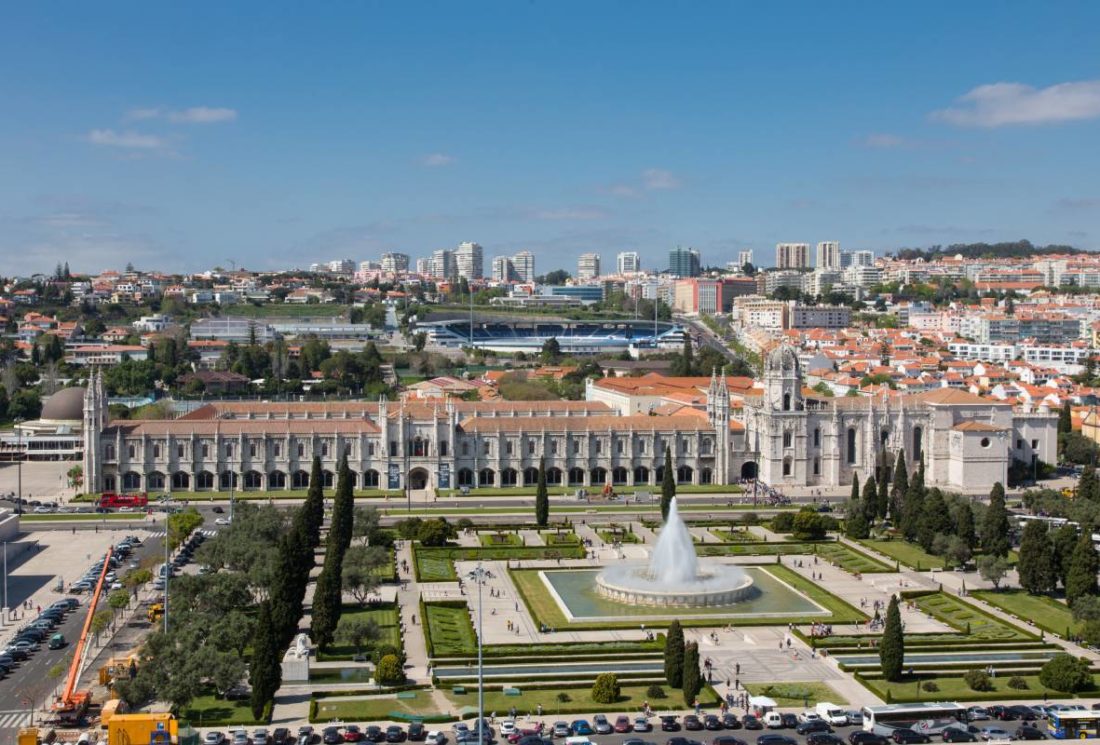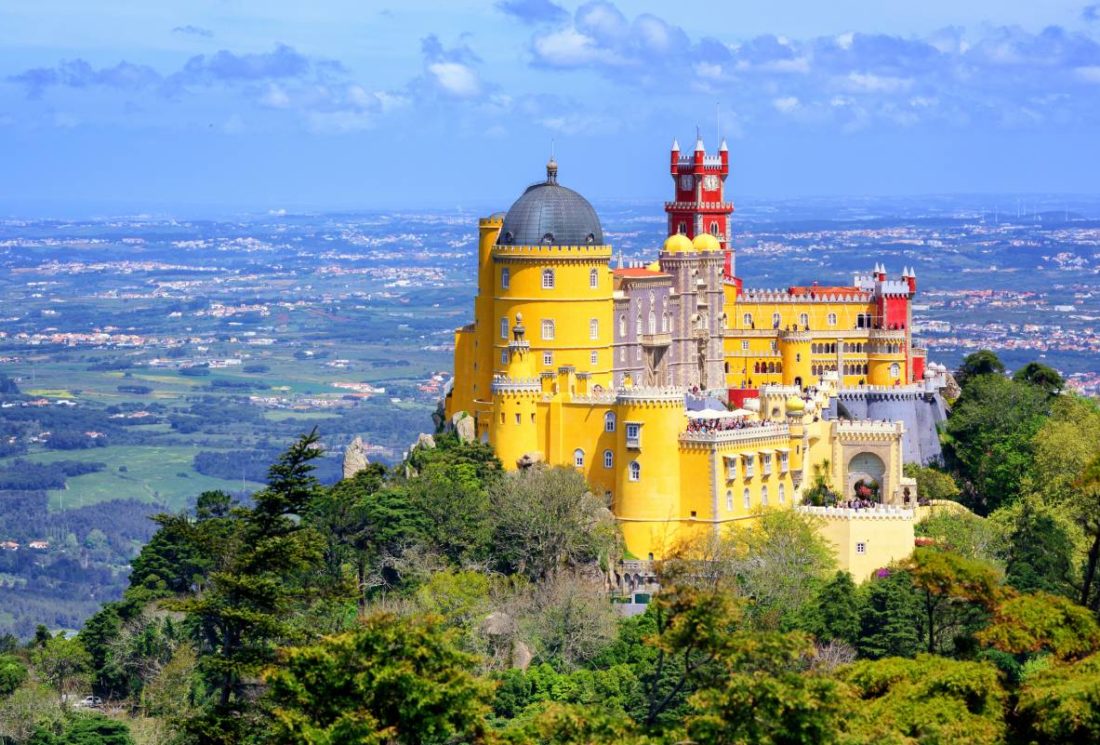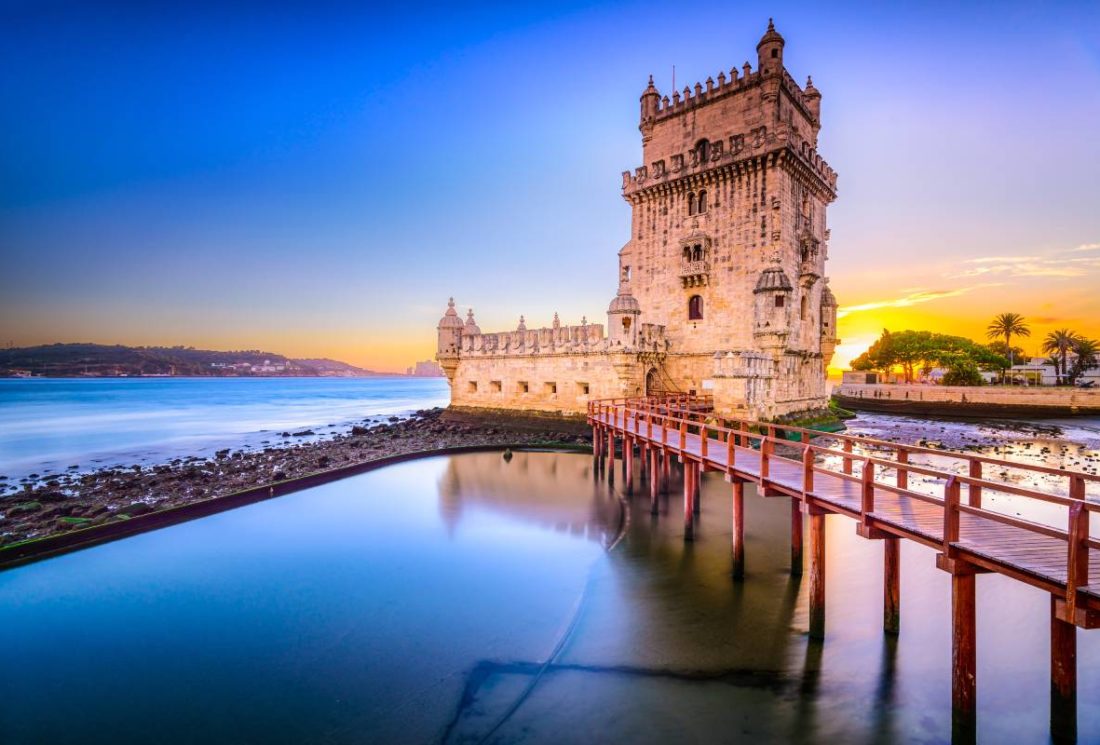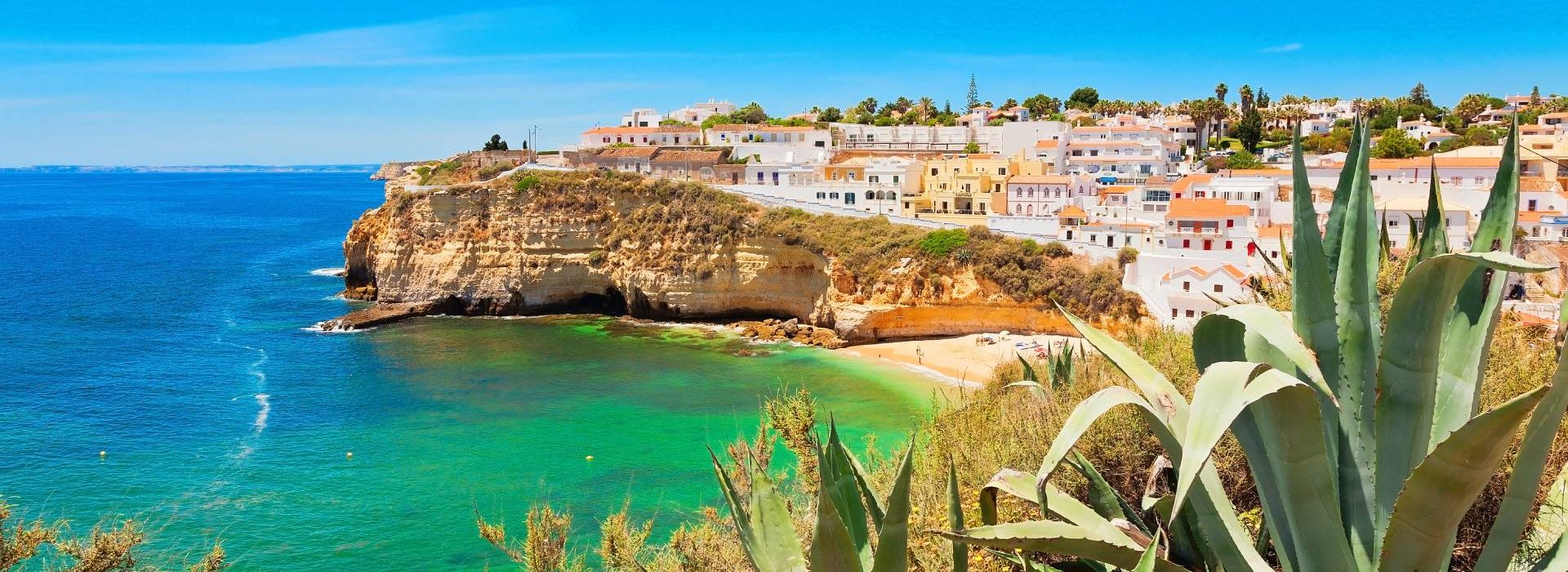
A Travel Guide to Picturesque Portugal
Home to the sunniest capital city in Europe
Portugal is increasingly growing in popularity with more people going every year. The small country welcomed more than 21 million tourists in 2018, with the majority of visits coming from the British.
The most popular destinations are the Algarve, which is known for being home to some of the most beautiful beaches on the continent and the best golf courses in the world, as well as Lisbon, the sunniest capital city in Europe.
There are so many things to do in Portugal and it is the ideal destination whether you are looking for an action-packed holiday with the kids, would like to relax with a loved one or are planning a golfing break with friends. You really will be spoilt for choice, so you need to plan your time and make the most of your trip.

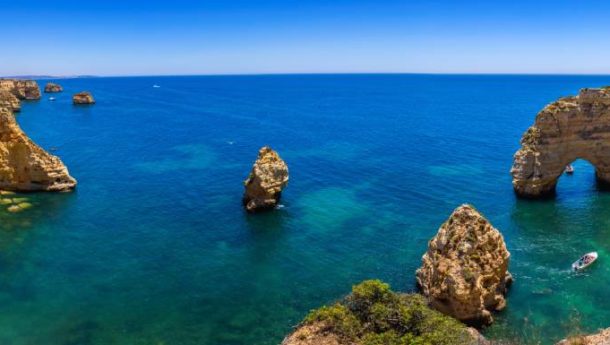
Portugal at a glance
Lisbon and the Algarve may be the most popular destinations in Portugal but they are far from the only ones. There is the second-largest city Porto or you may like to head away from the mainland and explore the islands off it, such as the Azores or Madeira.
Would you like to know more about this sunny destination? Read on to find out what you can expect from a holiday to Portugal.
Travel advice when visiting Portugal
Portugal is an incredibly safe destination. According to gov.uk, more than 2.3 million Brits visited Portugal in 2016 and the majority were without incident. However, you should take out travel insurance and be aware of your surroundings, just to be on the safe side.
Safety tips
Street crime can be an issue with pickpockets targeting money and passports. Make sure you leave anything you don’t need in your accommodation and that what you do have on you is tucked away and not on show. It can also get very hot here, make sure you drink plenty of water and wear sun cream, topping it up regularly especially if you are in and out of the pool or sea.
Transport
Portugal is a relatively small country. It would take around 6 hours to drive from the Peneda-Gerês National Park on the border with Spain to Faro, the capital of the Algarve, on the southern coastline. Whether you fancy exploring the country or just intend to take a few day trips, you may like to hire a car so that you can travel at your own pace. Alternatively, you can also travel around the country by train or bus. The latter is the better option if you are visiting more rural parts of Portugal.
If you are in Lisbon or Porto, you can travel by tram. The streets of these two cities are incredibly hilly and being on your feet, exploring all day, especially under the heat of the sun, can be tiring. So, this is the perfect way to move around – should you require it.
Average accommodation costs
The average accommodation cost in Portugal is €44 for one person and €88 for two people.
Popular Hotels
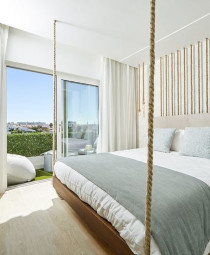

Oura Senses
Ideally situated in Portugal’s Algarve region, this well-located hotel showcases a new level of style and sophistication. Relax in apartments which look like they have stepped out of a magazine with artificial grass on your balcony, funky bedside lighting made from rope and TVs positioned on the wall.
Close to the entertainment filled Albufeira strip, it’s a great place to relax away from the action. The onsite pool comes with plenty of sunloungers and a peaceful atmosphere, while the free Wi-Fi is a real highlight when you want to stay connected.
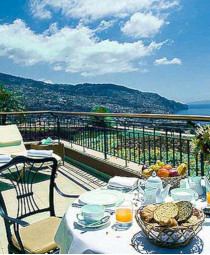

Quinta Das Vistas Palace Gardens
If its raised hillside setting doesn’t win you over, its manor house past is bound to intrigue you. The unrivalled views of Funchal are the main draw, but its 12,000 square metres of beautiful manicured gardens are a close second.
Everything has a superior look with grand furnishings matching its luxurious location. Your private balcony will be a much appreciated addition too. Taking full advantage of the hotel’s sweeping sun-kissed vistas, you’re never far away from Madeira’s infinite charms.
When it comes to relaxing the outdoor and indoor pools have you covered as does the spa with its cleansing Turkish bath treatments.
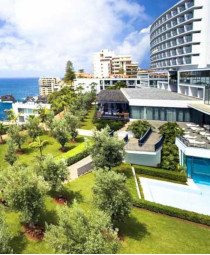

VidaMar Resort Maderia
Every inch the 5 star hotel it claims to be, VidaMar Resort Madeira is dripping in luxurious features. From three fancy infinity pools offering views of the glittering Atlantic Ocean to its one-of-a-kind spa experience and al fresco dining – every day will feel like your birthday.
Styled to perfection, the hotel’s décor is minimal yet elegant with giant floor-to-ceiling windows and ceramic floor tiles. As for dining, it’s a foodie’s paradise with five restaurants onsite, all specialising in different cuisine.
Explore your tropical surroundings further and head for the fauna-filled city of Funchal, which is within walking distance.
The best beaches in Portugal
If you are heading here for a relaxing beach holiday then you will be spoilt for choice, Portugal boasts more than 600 miles of sun-drenched coastline. In the Algarve alone there are over 150 beaches and the country has a whopping 90 that are Blue Flag, including all 25 in Albufeira. If you want to top up your tan on one of Europe’s most beautiful beaches, here are three of the best.
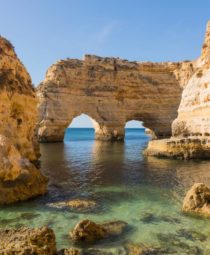
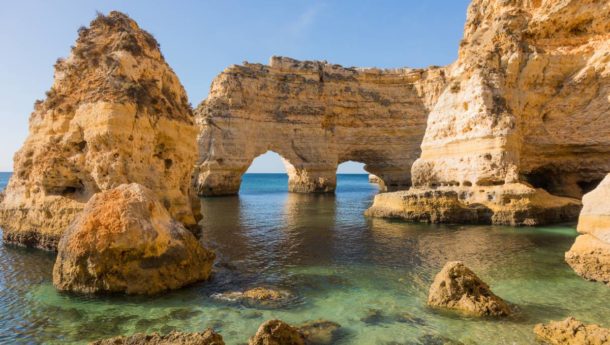
Praia da Marinha
This is the most famous and naturally, one of the best beaches in the Algarve. You may have seen it before? It is the image often used to represent the destination, whether that is in holiday brochures or on postcards to send home to friends and family. You’ll find this beach, which is regularly listed among the most beautiful in the world, in Lagoa. Limestone cliffs tower high above the soft sand and crystal clear water. At low tide you can walk out among the rocks, including the most recognisable formation which appears in the shape of an M.
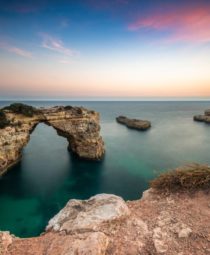
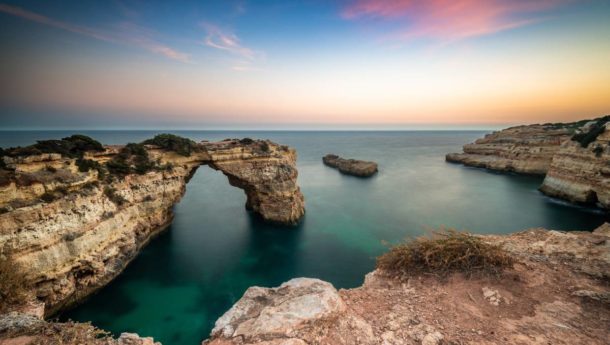
Praia de Albandeira
From the top of the cliffs that protect one of the regions most secluded beaches, you can actually walk to Praia da Marinha and take in the dramatic scenery from above. This small stretch of golden sand, also in Lagoa, is often listed among the best not just in the country, but in Europe. The clear water is the ideal place to put on your snorkel mask and discover the world beneath the surface of the calm water. You may also recognise this beach due to the rock formation including the notable arch. You can swim beneath this and round to Praia da Estaquinha.

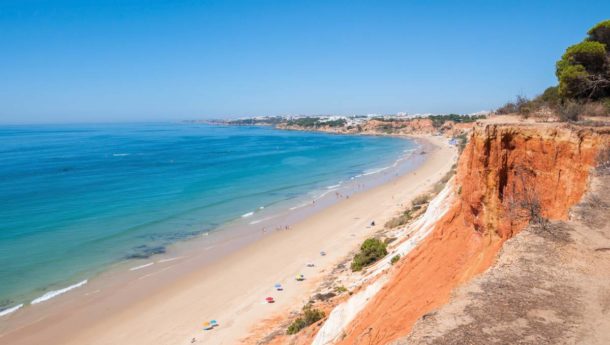
Praia da Falesia
This beach near Albufeira, which regularly appears among the country’s best was also listed in Top 25 Beaches in the World by TripAdvisor’s Travellers’ Choice Award in 2018. Praia da Falesia translates to Beach of Cliffs. The name comes from the red ones you’ll see towering high above the golden sand in the west, Açoteias. As you head east on this Blue Flag beach you’ll come to Alfamar, where the water is shallow and filled with divers and surfers as paragliders fly high above their heads. At three and a half miles long, this part of the coastline, that stretches from Vilamoura to Olhos de Agua, rarely feels overcrowded.
Excursions in Portugal
Portugal is a relatively small country, so you can easily see much more than just the resort you decide to base yourself in. However, one of the best excursions can be found just north of Lisbon.
Around nine miles off the Peniche coast is Berlengas Islands. It takes around 45 minutes by ferry to reach the group of small islands.
Make sure you visit Praia do Cerreiro do Mosteiro while you are here, it’s among the most beautiful and best beaches in Portugal. It’s fairly small but the only one you can access and swim off. Plus the water, although cold, provides the perfect conditions for snorkelling. You can look down on the beach as you hike in the hills above and get a bird’s-eye view of São João Baptista fort.


Food and drink in Portugal
There are many things that Portugal is famous for but Pastel de nata – or Pasteis de nata – is perhaps one of the best known. This is an egg custard tart that looks crispy and flaky on the outside but when you bite into you’ll discover it is creamy and sweet. It dates back more than 300 years to Belem, which is just west of Lisbon – the best place to try it is in the capital, at Pasteis de Belem.
Meat and seafood feature heavily in Portuguese cuisine. One of the most popular dishes is Piri-Piri chicken, which is believed to originate in Guia and is made with the Piri-Piri peppers that come from Portuguese colonies in South Africa. You’ll also find these peppers used in various sauces.
Grilled sardines are popular across Portugal but especially in the capital city. They are known as sardinhas assadas here and eaten with your hands. Codfish is known as ‘the faithful friend’ in this country and is popular all year round but is generally eaten on Christmas Eve.
The country’s traditional drink is port, a dessert wine. The grapes for this are grown near Porto in the Douro Valley and although you may have tried variations of this, only the wine produced here can be called port.
You’ll no doubt want to try the local cuisine and avoid the places that you can eat in back home. However, you might change your mind when you see what has been described as ‘the most beautiful McDonald’s in the world.’ It is situated in Porto and boasts Art Deco features.
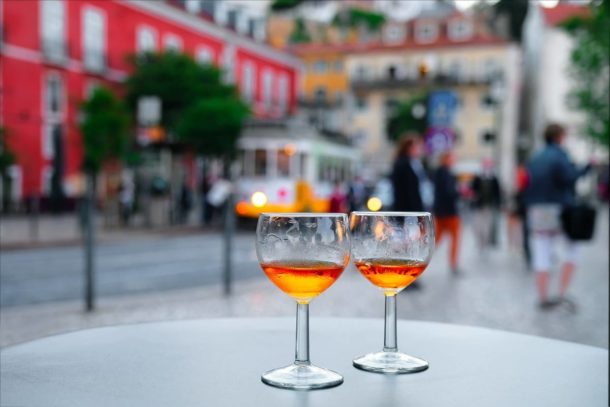
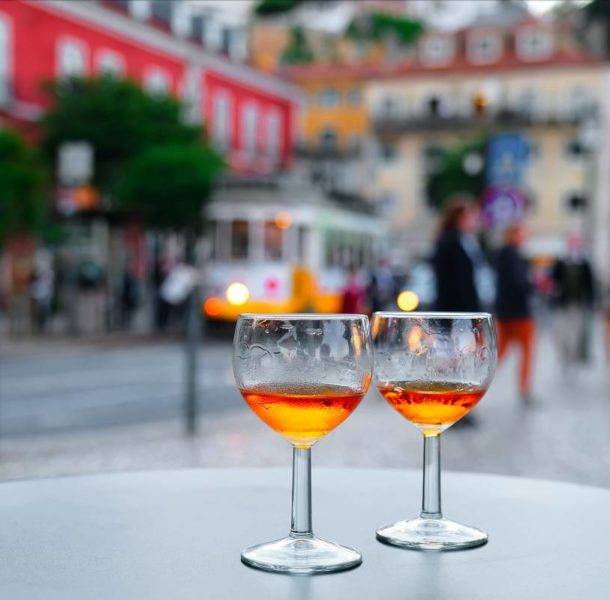
Portugal nightlife
If you are looking for nightlife, then the Algarve is one of the best places to head for, with the party primarily in Praia da Rocha, Lagos and Albufeira.
Lisbon also comes alive after dark as does Porto, which is becoming increasingly popular with partygoers.
Dinner tends to be eaten later here, so you won’t be heading to the club until around 10 or 11pm. They then stay open until the early hours of the morning, some as late – or early – as 6am. It’s worth noting, however, that the best nightlife is from June to September.
If you are here in June, you may well experience the street parties that take place across Portugal as residents celebrate various saints. In Lisbon in mid-June it is the Popular Saints’ Festivals, while later in the month, Porto has São João Festival.
Shopping in Portugal
Whether you would like to pick up a souvenir to take back home or just fancy a spot of retail therapy, the Algarve is one of the best places in the country. The shops on the southern coastline open early and close late, so you have plenty of time to browse.
Albufeira, Lagos and Faro are three of the best places for shopping. In the region’s capital you can browse more than 120 shops at Forum Algarve before grabbing a bite to eat at one of the 20 restaurants. There are many free events here in the summer where you can see bands and artists perform.
In Loulé you’ll find a shopping centre that only opened in 2017 and became the largest in the region. In MAR Shopping you’ll find more than 100 shops, including the country’s largest Primark as well as a designer outlet and an IKEA.
There are also a number of outdoor markets in the region including Quarteira Gypsy Market which is the most popular.
You’ll find lots of products made from cork including shoes, wallets and handbags – the country is home to half the world’s cork-producing oak trees.
Portugal culture and art
If you want to find the country’s art scene, then look no further than the capital city. Throughout Lisbon you’ll find both famous art galleries as well as independent ones. You won’t want to miss Galeria 111, it’s owned by Manuel de Brito, one of the country’s most famous gallery owners and biggest art collectors. Opened in the 60s, it became a place for contemporary artists to meet up. Today, it showcases work by the best local artists including João Leonardo.
As you head between the galleries and museums, you’ll see that the city streets are decorated too. In Mouraria, there are walls dedicated to fado.
In fact, you may like to listen to fado music while you are here. There are restaurants in the capital including Casa de Linhares where you can enjoy Portuguese cuisine with the music that originated here in the 1920s, in the background. The singing is expressive and accompanied by guitars. In 2011, it was added to the list of the World’s Intangible Cultural Heritage.
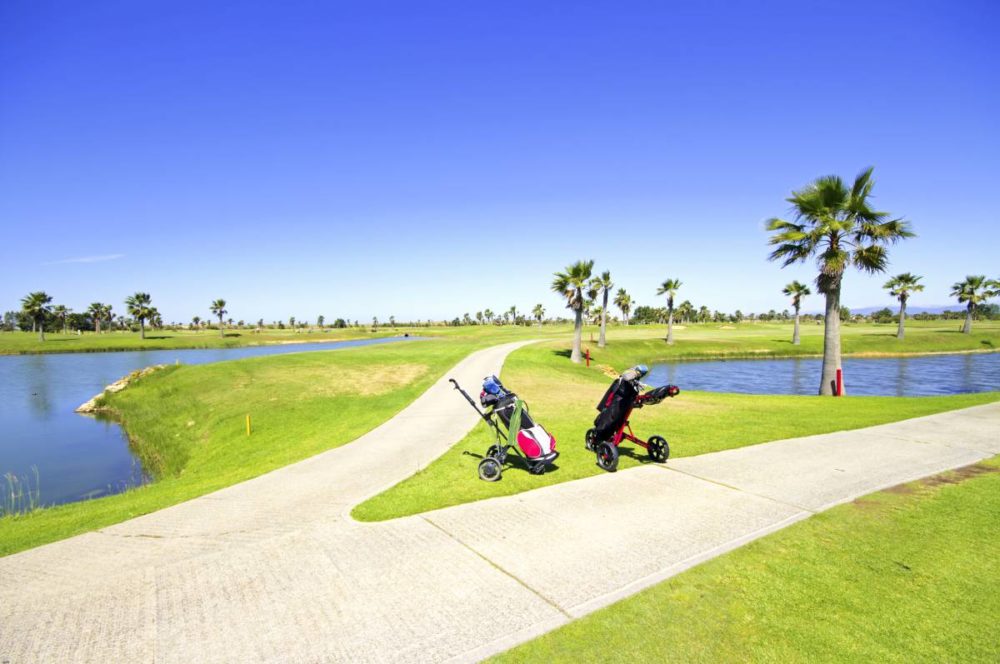
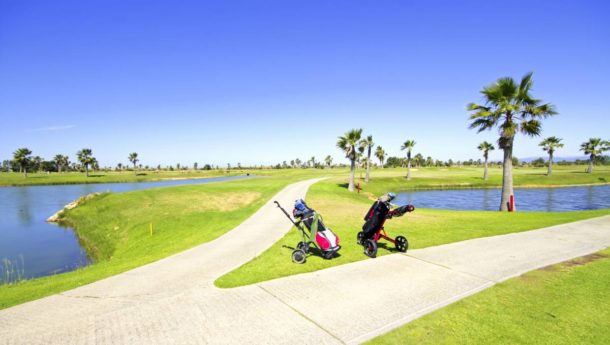
Outdoor adventure in Portugal
Portugal is one of the most famous golfing destinations in the world, especially around the Algarve. In fact, the country’s southernmost region has won ‘best golf destination in Europe’ as well as ‘best golf destination in the world’ at the World Golf Awards.
The list of the Top 100 golf courses includes The North course at Monte Rei Golf & Country Club in the eastern Algarve as well as San Lorenzo. But, you may also like to play at The Penina which can be found between Portimão and Lagos. It is the oldest in the region, dating back to 1966 and hosts tournaments such as the Portuguese Open.
If you don’t fancy playing golf, then what about surfing? You’ll find some of the biggest waves in the world here, making it one of the best places in Europe for surfing. If you want to ride the waves, head for Lagos in the Algarve, Peniche in Oeste and Matosinhos near Porto.
How about seeing the Portuguese capital from the water as you kayak the Lisbon coast? A 90-minute guided tour will take you alongside some of the city’s most famous landmarks, enabling you to see them from a whole new angle.
In Parque Nacional da Peneda-Gerês in the northern Minho region you’ll find Serra do Gerês – a mountain range that is ideal for hiking. These are among the highest peaks in the country and offer wonderful views across the park and beyond. It is perfect for both beginners and more experienced hikers with trails ranging from easy to more challenging.
If you are looking for a more exhilarating activity, then you might like to fly across the border between Spain and Portugal. You may have done this before in a plane, but this time you will be ziplining. This is the only cross-border zipline in the world and take you 720 metres across the River Guadiana, from Alcoutim in northern Algarve to Sanlúcar de Guadiana in Spain.
Off-the-beaten track
Once you have seen the country’s top attractions, you may like to head off the traditional trail and see a side of the country that isn’t always experienced by tourists. Here are three places to get you started:
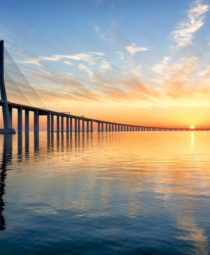
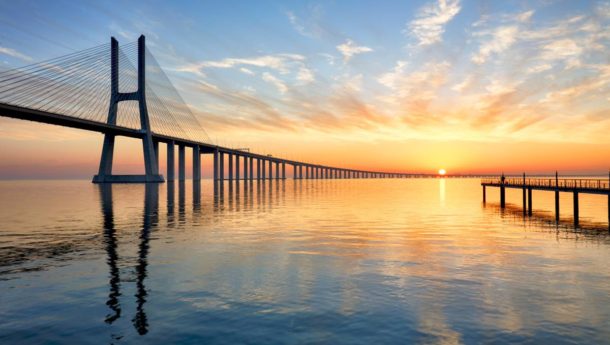
Vasco da Gama Bridge
Have you heard of the Portuguese explorer Vasco da Gama? He was born in Sines in 1460 and in 1497 became the first person to sail directly to India from Europe. Today, there is a bridge in Lisbon named after him. The record-breaking bridge stretches for 10 miles making it the longest in Europe. Since 1998 it has connected the north and south of the country. Admire it from Parque das Nações or take a drive across it.

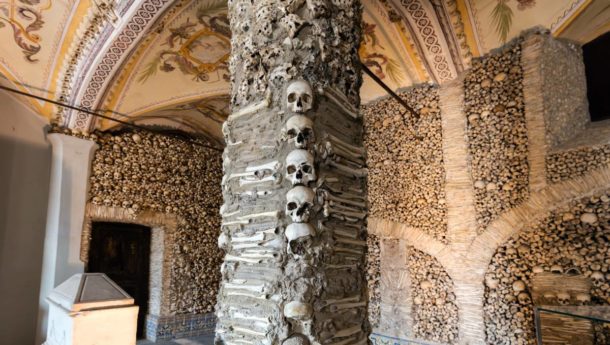
Chapel of Bones
In Évora you’ll find the 16th century Chapel of Bones. Bones and skulls decorate the walls here, with some forming entire bodies. It is part of the Royal Church of St. Francis and was created when the cemeteries started to take up too much space and so the monks decided to move around 5,000 remains. Translated to English, the sign above the door when you enter, reads: “We bones, are here, waiting for yours.” The chapel, which is based on the ossuary of San Bernardino alle Ossa in Milan, was designed to be a place to reflect.

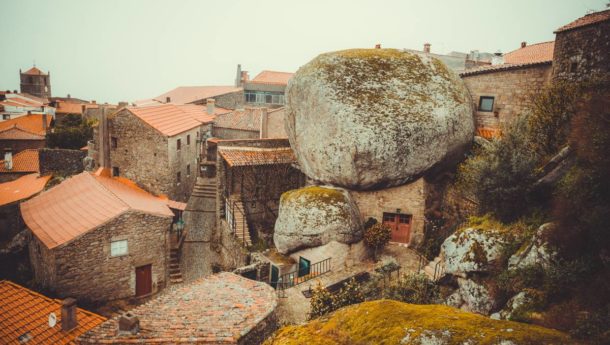
The Village of Monsanto
This village in Alcains was once described as ‘the most Portuguese town in Portugal.’ It is located on the top of a mountain and boasts views across the countryside but what makes the village of Monsanto unique is that the houses are tucked into large boulders. Visit today and you’ll see it almost exactly as it would have looked hundreds of years ago. Wander the cobbled streets and you’ll notice that, although at first glance it is very different to the rest of the country, there are actually many architectural elements that are exactly the same.
Best times to go to Portugal
Portugal is a year-round destination. Lisbon is actually the sunniest capital city in Europe. It enjoys 2,799 hours of sunshine every year.
August enjoys the most hours of sunshine, with a whopping 12 hours a day. The average temperature during July, the hottest month, is 24°C, while the coldest month is January when on average the temperature is 12°C.
If you are heading to Portugal to spend the duration of your trip soaking up the sun on the beach then you’ll want to go in the hotter months. The waters off the Portuguese coast aren’t that warm which is why you’ll want to be here from July to September as these months see the warmest temperatures. The warmest water can be found on the Algarve.
If you are planning to visit the Algarve for a golfing holiday and want to avoid the crowds then go in late April to early June or mid September to late October and avoid peak season. It will also be warm but not too hot as you walk around the course.
November to January is actually the best time for surfing because the waves are at their highest.
Now you know the top attractions, best beaches, what you’ll be eating and drinking and where the best nightlife is, you can start planning your trip to Portugal.

Find the perfect Portugal holiday
Let us help you find the perfect holiday destination for you
View all Portugal holidays